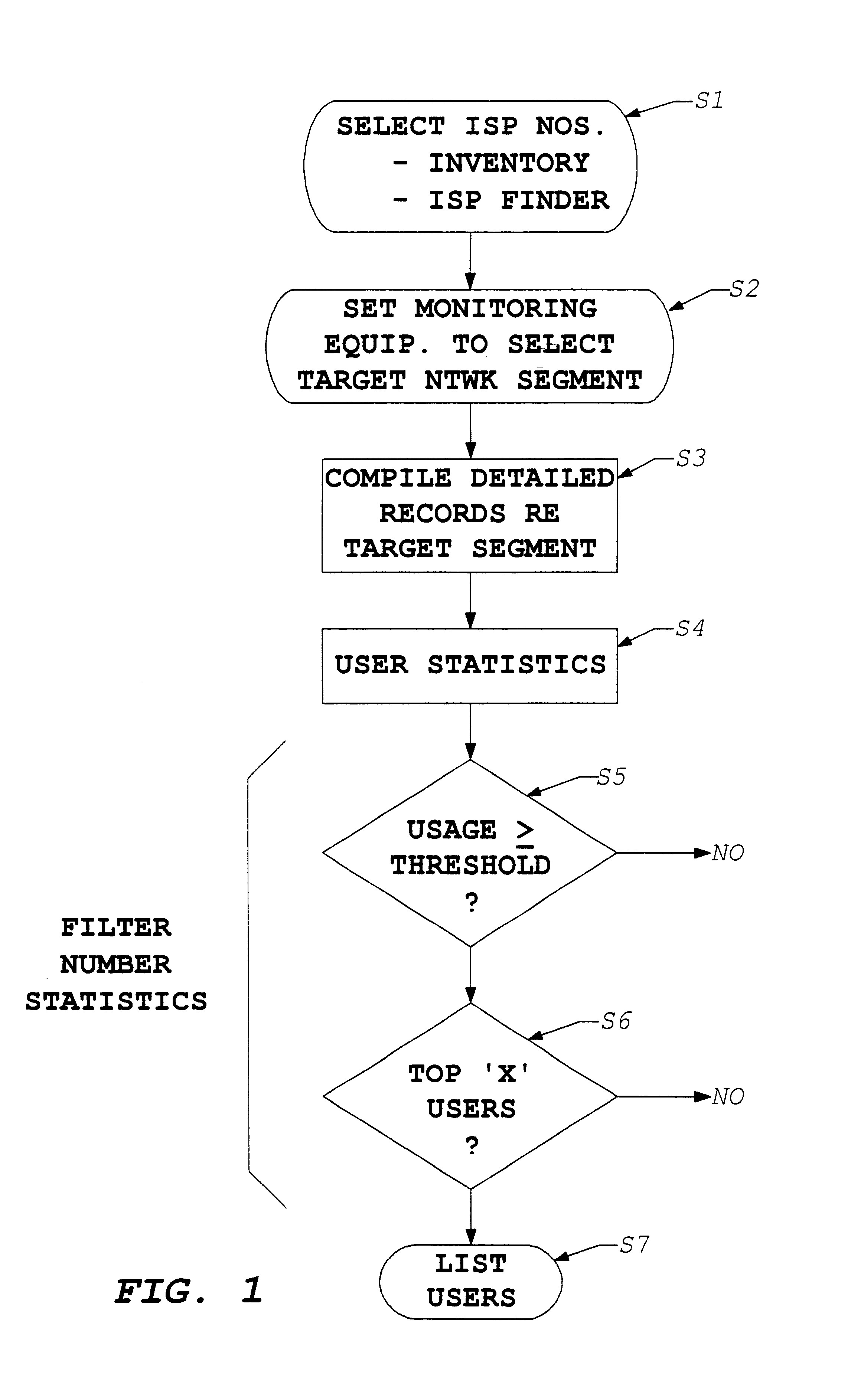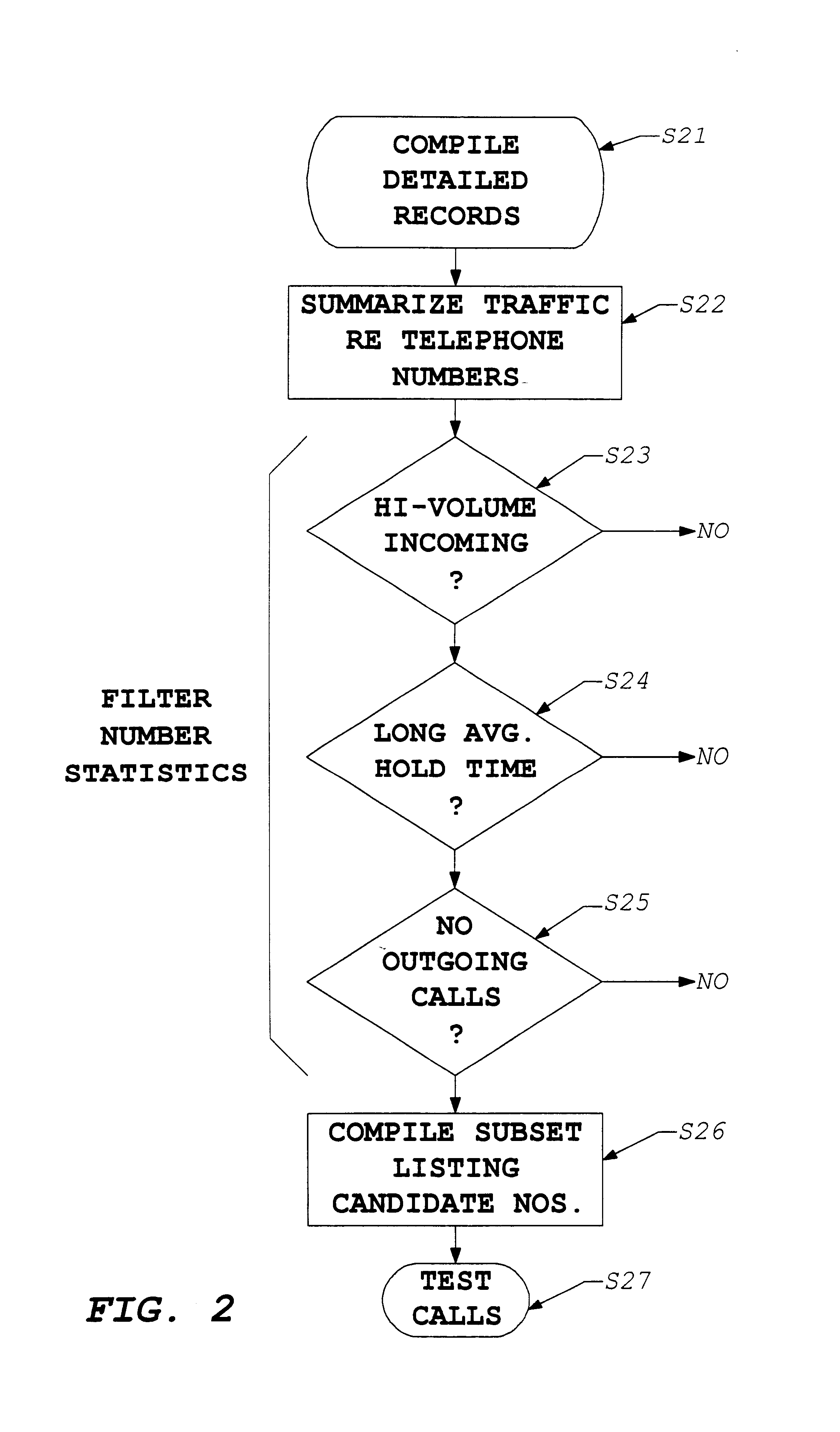Internet user finder
a user finder and user technology, applied in the field of internet user finder, can solve the problems of increasing the pressure on cost effective engineering and upgrading of the telephone network, exacerbate the difficulty of meeting the new traffic demand, and increasing at an exponential rate. achieve the effect of convenient, convenient, accurate and cost effective methods
- Summary
- Abstract
- Description
- Claims
- Application Information
AI Technical Summary
Benefits of technology
Problems solved by technology
Method used
Image
Examples
Embodiment Construction
[0094]The present invention involves compiling call records from management data of a telecommunication network. From those records, the invention identifies users who initiate a high volume of traffic to a particular type of service provider, for example to a provider of Internet access services. Essentially, such a user finder study involves identifying destination numbers of the service providers. The records of calls to those destination numbers are analyzed to identify callers meeting predetermined criteria, e.g. making more than a threshold number of calls or compiling more than a minimum amount of total connect time to the service providers.
[0095]This inventive technique may identify heavy usage callers to a variety of different types of service providers, for example, to providers of dial-up long distance services, to pre-paid calling card services, etc. In the presently preferred embodiment, the inventive study identifies heavy users of Internet services, and the following ...
PUM
 Login to View More
Login to View More Abstract
Description
Claims
Application Information
 Login to View More
Login to View More - R&D
- Intellectual Property
- Life Sciences
- Materials
- Tech Scout
- Unparalleled Data Quality
- Higher Quality Content
- 60% Fewer Hallucinations
Browse by: Latest US Patents, China's latest patents, Technical Efficacy Thesaurus, Application Domain, Technology Topic, Popular Technical Reports.
© 2025 PatSnap. All rights reserved.Legal|Privacy policy|Modern Slavery Act Transparency Statement|Sitemap|About US| Contact US: help@patsnap.com



